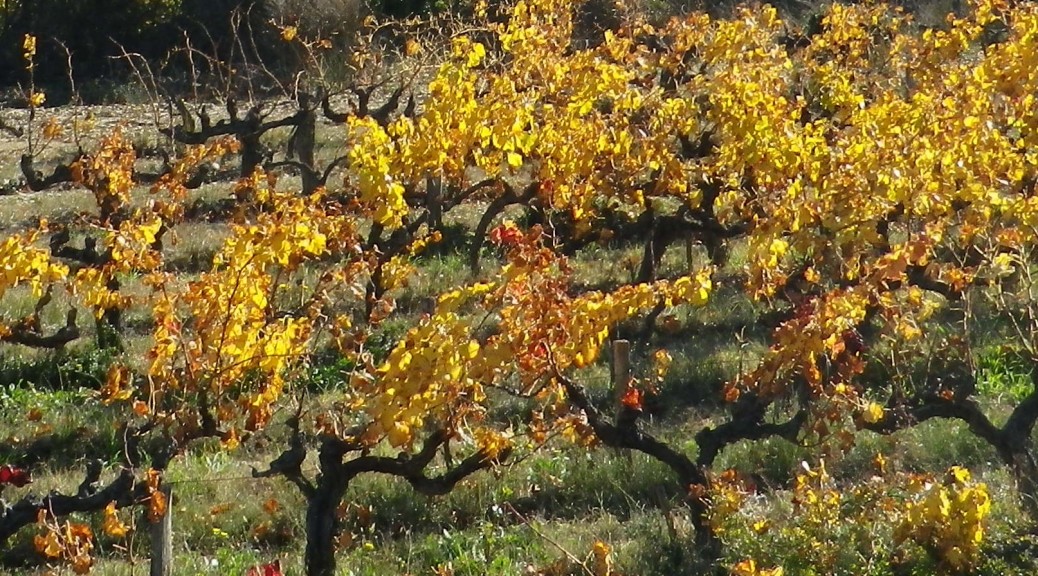What I Learned
Cotes du Rhone is the name of a French wine region. It is a long region, following a lengthy stretch of the Rhone River from south of Lyon to Avignon. This post covers the southern Rhone area, the Cotes du Rhone Meridionale (as it is sometimes referred to), specifically the Vaucluse county (around Avignon), where the climate is more Mediterranean in feel than in the northern Rhone district (around Lyon). (Find information on a northern Rhone district appellation, the Appellation Saint Joseph, here.)
Grapes have been cultivated in the Rhone Valley since the time of the Greeks (who had established a trading post on the coast in what is now Marseilles). Legend has it that they introduced viticulture techniques, and used the Syrah/Shiraz grape, which allegedly came from the Persian town of the same name. True or not, Syrah has a long and interesting enological history in the Rhone valley.
The viticultural traditions continued and were further enhanced with the arrival of the Romans, who quickly moved north along the Rhone River Valley. These traditions continued even after the fall of the Roman Empire. (This particular area of France became very Latinized over five centuries of Roman rule.) Wine was in high demand in the area. Vaison-la- Romaine (the Roman, lower town), excavated almost 1500 years after its demise, has the evidence in the form of amphora, glasses, etc.
The arrival of the Popes in the 14th century in Avignon, a bit south of Vaison, only served to increase demand for wine. Chateauneuf du Pape, while already a site of a chateau and vineyards on the left (eastern) side of the Rhone, expanded greatly under the first Pope in Avignon. The popes had also acquired a pocket of territory north of Avignon, the so-called Enclave des Papes, which also produced wine. Nowadays, many villages in the Enclave are justifiably well-known for their wines, such as Cairanne, Valreas, and Visan.
Ironically though, quality standards were first issued in the 1600s for the vineyards along the right (western) bank of the Rhone, as these were deemed superior. Later the left bank was included, and by 1937 the rules were codified into law. This became the first legally recognized wine appellation in France. Thus the appellation system developed here. But with such a large territory, and such long-established enological history and traditions, it is no surprise that many other appellations have developed over the years in this region. (Distinguishing some of the different appellations will be the subject of the next Wine Notes post.)
In this southern area of the Rhone, the wineries produce a far larger share of the region’s production than does the northern part. As a result, the names of the wines and appellations (such as Chateauneuf du Pape) will likely be familiar to most people who enjoy red wines, as the sample below demonstrates.
What I Tasted
A sample of Southern Rhone (Rhone Meridionale) appellations:
2013 Gigondas, Appellation Gigondas Controlee, Domaine Raspail-Ay, Dominique Ay (Gigondas): A dry red wine with dark, dark red color; a ripe cherry and red fruits nose, and spice and cherry flavors; smooth with mild tannins.
2013 Vacqueyras, Cuvee Floureto, Appellation Vacqueyras Controlee, Domaine Du Sang des Cailloux: A dry red wine cuvee (70% Grenache, 20% Syrah, 7% Mourvedre, 3% Cinsault) with a deep red maroon color; slight red fruits nose, and red fruits, smoke and oak flavors.
2013 Muscat de Beaumes de Venise, Appellation Muscat de Beaumes de Venise Controlee, Domaine Beaumalric: An off-dry, fortified white wine with light gold color; a sweet and floral nose, with honey, dried apricot and dried orange flavors.
2013 Cairanne, Cuvee Tradition, Appellation Cotes du Rhone Villages Controlee, Cairanne, Domaine Alary: A dry red wine blend (Grenache, Syrah and Carignan), with dark red color; nose of red fruits, and red fruits and spice flavors; medium-high tannins, smooth overall.
2012 Cuvee Benedikt, Grande Reserve, Appellation Cotes du Rhone Controlee, Vignerons de l’Enclave: A dry red wine blend with medium to dark red color; herbs, fruit nose, red fruits and herbs; medium tannins and a slight spicy flavor on the finish.

One thought on “Wine Notes: Southern Rhone (Rhone Meridionale)”
Comments are closed.